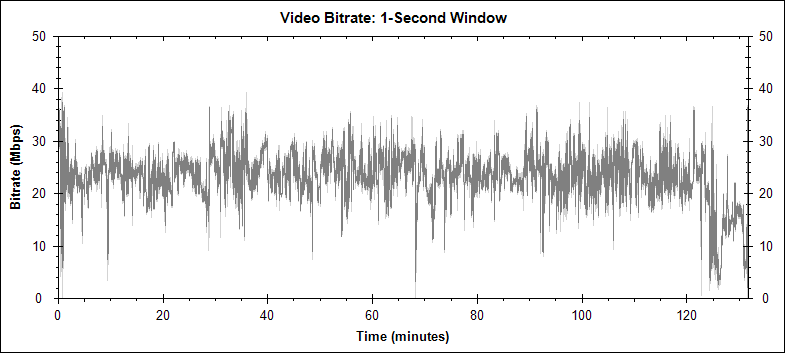 Picture:
Picture:  Sound:
Sound:  Extras:
Extras: 

Download scan of review (JPEG, right click, Save As)
Movie:  Picture:
Picture:  Sound:
Sound:  Extras:
Extras: 
Layer Cake had been solid and interesting. Vaughn went on to the twisted fairy tale Stardust, which was amazingly good, and then the super-hero-who-isn't Kick-Ass, which is even better. Better prepared, more experienced, and willing to rewrite, Vaughn came back for this prequel. To be clear, this prequel is set in the early 1960s (the plot makes use of the Cuban Missile Crisis). Wolverine (Hugh Jackman), who was shown by the last X-Man movie to be extremely old, appears in a funny, very brief cameo.
It is very nicely done. The script fully respects the X-Men universe, and does its part in explaining some of what's seen in the other X-Men movies. Amongst other things, it is an origin story for blue-furred Dr Hank McCoy, diplomat and beast, played by Nicholas Hoult (the kid from About a Boy).
I was worried that James McAvoy (Wanted, Atonement) might seem a bit fresh-faced for the young Charles Xavier, and in a sense he is. But his early naivety allows development of his character as he builds a group of young mutants into a formidable team. At this point he and Magneto (Michael Fassbender) find each other and become allies to fight an insidious (and, at the beginning, almost unrecognisable) Kevin Bacon and his band of mutants. The opening scene recalls that of the first X-Men (2000) and takes it into terrifying territory.
Vaughn does not shy away from using all the digital tools at a modern director's disposal, but even in today's world he shot on film rather than digital. There's a certain window-like quality that he achieves, in which blemishes on a character's complexion are laid bare, despite the CGIing that's happening all around. Somehow this makes the picture seem more analogue than is the norm for such works.
The filming has character, fully preserved by the 23Mbps+ of the MPEG4 AVC encode.
The sound, also, is impressive. Much is whizzing around our heads through the course of the movie; especially in the climactic tropical scene at the end. Just about four megabits per second -- a respectable bitrate for the video of a DVD -- of DTS-HD Master Audio are devoted to the cause of delivering this truly.
All the extras are in HD: 14 minutes of deleted scenes, 70 minutes of featurettes, plus a game that lets you select mutants for additional information, including graphical text panels and HD movie clips from the X-Men oeuvre. The two disc package has the movie and extras on the Blu-ray, and is accompanied by a DVD. This carries both a regular DVD version of the movie, plus a close to 2GB 'Digital Copy' of the movie for watching on a computer or portable device.
Region coding is complicated in this world of joint Blu-ray and DVD releases. The former can have up to three regions, the latter six. 20th Century Fox was a vigorous applier of Blu-ray region codes in the early days, although it seems to have been  easing off somewhat over the last couple of years. This package is labelled Region 'B' for the Blu-ray, and '4' for the DVD. I have found that it's not wise to fully trust the region codes printed on the box for both DVDs and Blu-ray. On checking, I found that the DVD is actually Coded for Regions 2 (Europe) and 4 (here and the Americas south of the United States). The Blu-ray is Region Coded for both A and B, but not C (China, South Asia, the lands formerly constituting the Soviet Union).
easing off somewhat over the last couple of years. This package is labelled Region 'B' for the Blu-ray, and '4' for the DVD. I have found that it's not wise to fully trust the region codes printed on the box for both DVDs and Blu-ray. On checking, I found that the DVD is actually Coded for Regions 2 (Europe) and 4 (here and the Americas south of the United States). The Blu-ray is Region Coded for both A and B, but not C (China, South Asia, the lands formerly constituting the Soviet Union).
Oddly, while the disc plays fine in a Region A player in addition to Region B, if you try to play in a Region C one it displays a messaging saying the disc is encoded for Region B playback only. Did Fox overlook something?
Nerd note: Like MPEG2, MPEG4 AVC uses three kinds of frames: 'I' anchor frames which stand alone and can be decompressed individually, 'P' frames which require knowledge of previous frames in order to be decompressed, and 'B' frames, which require knowledge of both earlier and following frames to decompress. A typical movie will consist of around 5% I frames, 30% P frames and 65% B frames in a sequence like IBBPBBPBBPBBI. The distance between the I frames is a judgement call, but the figures suggest that typically about every twenty-first frame uses I encoding. The reason is that I frames generally require more space than P frames, which in turn need more than B frames. For a movie I examined recently the average I frame (remember, 1920 by 1,080 pixels) used 200kB, the average P frame 144kB and the average B frame 106kB.
On this movie some 4.76% of the frames are I frames, and all the rest are P frames. There are no B frames.
Does it make a visual difference? Not so far as I can tell. The US version's stats look identical.
 (Australian rating); Locked to Region B
(Australian rating); Locked to Region B
The following video bitrate graph was generated by BDInfo 0.5.7 (as was the frame type count graph above):
